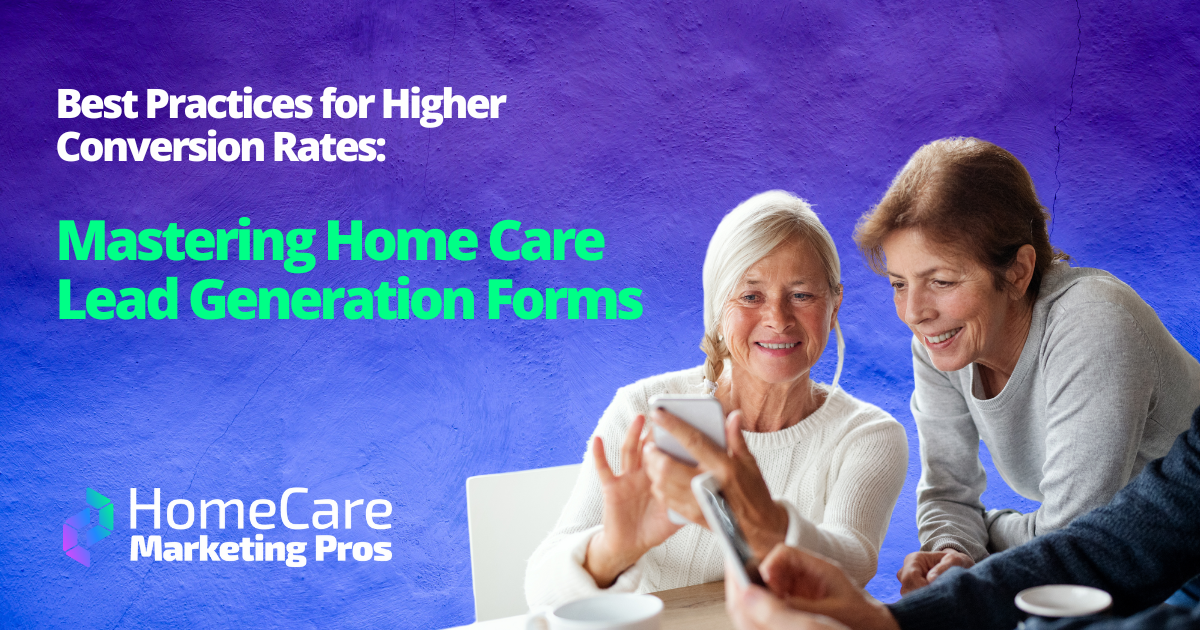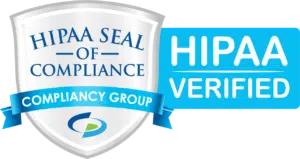Best Practices for Higher Conversion Rates: Mastering Home Care Lead Generation Forms
How to optimize your lead generation forms to collect more qualified leads

Have you put any thought into your home care lead generation forms? Marketing campaigns put lead generation front and center, but that doesn’t mean your lead generation forms have been optimized to gather valuable information on potential clients.
Let’s take a look at the best ways to use lead generation forms to add more home care leads to your sales funnel.
What is lead generation?
Lead generation is the process of gathering the names and contact information of people in the market for the services you provide.
The goal of lead generation is not to gather as many names and phone numbers as possible.
The best leads are actively looking for the services you offer, are located in your service area, and can afford your prices.
Lead generation can be done in a number of different ways. Your home care agency might use something like:
- PPC, display, or social media ad campaigns
- SEO content
- Organic social media content
- Client referrals
- Website contact forms
- Webinars and community events
But lead generation isn’t easy. According to WebFX, 37% of marketers say lead generation is one of their biggest challenges. Careless, wide-net lead generation can produce a lot of irrelevant contacts, and therefore a lot of waste. Strategic planning can help home care agencies avoid that.
What is a lead form?
A lead form is a digital tool used to capture the contact information of interested leads. It’s a series of fields a visitor fills out, providing you with their name, contact information, and sometimes, details about the services they’re looking for.
A good lead form can help you eliminate a great deal of lead waste by qualifying the leads that come to you. That is, asking a few preliminary questions to determine if they’re eligible for your services, like their location or services offered.
Lead forms typically have required and non-required fields. The former will not allow the visitor to submit their information unless filled out.
Where do lead generation forms appear?
There are a few places where lead generation forms typically appear:
- On the homepage of your home care website
- On the contact page of your home care website
- On digital ad campaign landing pages—including those for PPC, social media, and display ad campaigns
But you can make all kinds of forms into lead generation forms! There are plenty of natural ways to collect contact information from site visitors
- Registration forms: If you host an informational session, ask attendees for basic names and contact information, which you can add to your marketing automation platform.
- Email/newsletter subscription forms: Use your email newsletter to nurture your new leads and convert them into clients.
- Content gates: Have a great piece of long-form content on your site, like a home health or financial resources guide? “Gate” that content by requiring visitors to provide some basic information in order to download.
Optimizing your forms for conversion rate
Experiment with your lead generation forms and tweak them between campaigns to find the combination of language, fields, colors, and messages that convert the most visitors into leads.
You may find that you get more home care leads if the form is green rather than blue, or if it’s bannered with Let’s explore our options rather than Let us contact you.
The goal of optimization is to increase the conversion rate. Your lead form conversion rate is valuable data your home care agency can use to close more sales.
How to calculate conversion rate
Calculating conversion rate is a simple math problem, and a good marketing automation platform will often do the work for you.
the number of leads gathered through that form / the number of visitors = conversion rate
So, if your lead generation campaign brings 100 social media users to your campaign landing page, and 20 of them fill out the contact form, then your conversion rate is 20%.
How to design a home care lead generation form
Here are a few basic dos and don’ts of designing your lead generation form.
What to include
Most lead generation forms include a few basic fields:
- First name
- Last name
- Phone number
- Email address
If you get nothing else, collect their name and a way to get in touch with them—ideally, a phone number. Think of it this way: With email the only way to contact them is with that email (which may send you to their spam folder). If you have their phone number, you can call, text, or leave a voicemail, maximizing your chances of getting in touch.
Home care lead generation forms can include other key fields:
- Zip code or city: As a way to qualify those incoming leads—if they’re outside your service area, you can use the form to notify them
- The type(s) of service the person is interested in: Use a drop-down menu to let potential leads know what you offer. If they don’t see what they need, they can self-select out.
- How soon they need services: This will help you categorize your leads as urgent or not urgent.
- Consider using a captcha to minimize spammy entries.
What to avoid
- Less is often more. Don’t overload potential clients by asking for too much information upfront. A few fields are sufficient.
- Limit the number of required fields to maximize the chances of collecting that information and prevent visitors from bouncing.
4 tips to increase lead form conversion rates
- Target the right channels and platforms: You won’t increase your conversion rates by simply casting a wide net. Use campaigns to target specific platforms, keywords (for both PPC and SEO), and websites frequented by people who fit your consumer profile.
- Tailor your messaging to the campaign: Just like casting a wide net won’t work, neither will bland, generalized messaging. The language that works on your home care site’s contact form won’t necessarily be the right language for your PPC landing page form.
- A/B test colors, messaging, and fields: Playing with the content and presentation of your lead generation forms can help you find the right combination that converts more visitors into leads.
- Qualify your home care leads: To reduce waste, consider adding a qualifying question or two, like zip code, so you can easily sort out leads that don’t fit your client profile
Ready to convert leads into clients?
Now that you’ve got a bunch of new leads, what will you do with them? Convert them into paying clients, of course. Home Care Marketing Pros’ CareFunnels makes converting leads into clients easy and insightful. Schedule a demo to see what marketing automation can do.












